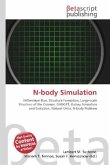High Quality Content by WIKIPEDIA articles! Where g is gravity and Cp is the heat capacity at constant pressure. If a gas is unstable against convection then if an element is displaced upwards its buoyancy will cause it to keep rising or if it is displaced downwards it is denser than its surroundings and will continue to sink. Therefore, the Schwarzschild Criterion dictates whether an element of a star will rise or sink if displaced by random fluctuations within the star or if the forces the element experiences will return it to its original position. For the Schwarzschild Criterion to hold the displaced element must have a bulk velocity which is highly subsonic. If this is the case then the time over which the pressures surrounding the element changes is much longer than the time it takes for a sound wave to travel through the element and smooth out pressure differences between the element and its surroundings. If this were not the case the element would not hold together as it traveled through the star.







